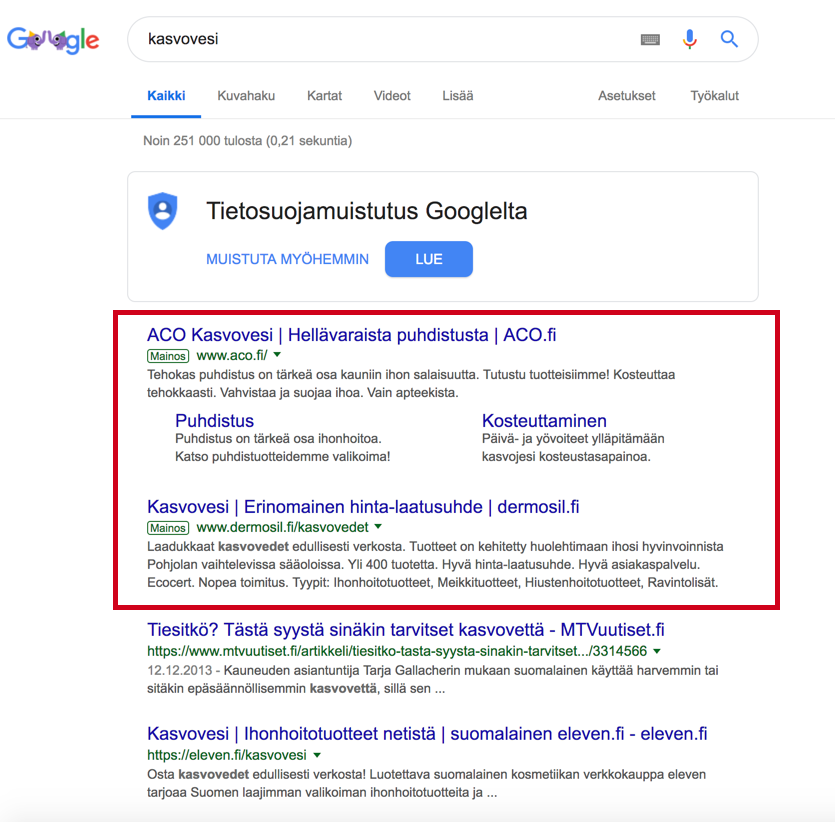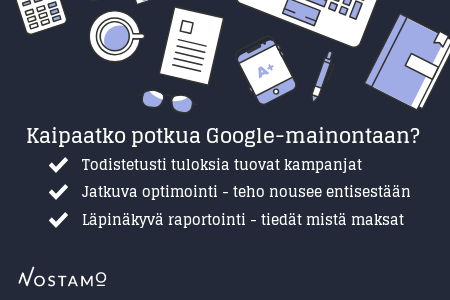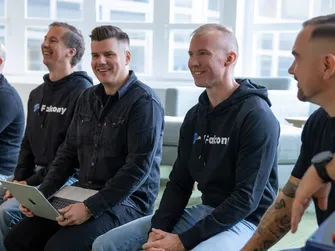Google marketing has undergone significant transformations over the years. Google's algorithms have gradually evolved to become more efficient, requiring practitioners of both search engine advertising and search engine optimization to update their work processes to keep up with the developments.
How is Google marketing done effectively today?
Overview of Google Marketing
Marketing on Google is divided into search engine advertising and search engine optimization. Both techniques have dedicated supporters, leading to some degree of opposition between them. However, the best results are achieved by utilizing both techniques.
Benefits of advertising include:
The company maintains full control over the content visible on the search results page.
It can quickly acquire ready-to-purchase visitors.
Remarketing can be targeted to visitors who have been on the website.
Display advertising can be utilized.
Benefits of search engine optimization include:
Cost-effectiveness (no need to pay Google for ad fees).
Awareness can be spread through informative content (advertising is more focused on the end of the purchase path).
Organic search results receive relatively more clicks than ads.
People trust organic search results more.
Overview of Search Engine Advertising
As the name suggests, search engine advertising involves separate advertising fees charged by Google. Charges are based on a cost-per-click pricing model, meaning the advertiser only pays when someone clicks on the company's ad. Advertising can be done on both the search network and the display network.
In the search network, ads are activated based on keywords defined by the Google marketer. On the first Google search results page, there are a total of 7 ad slots. The placement of the ad depends on the quality score assigned by Google's algorithm and the bid amount, i.e., the price the advertiser is willing to pay for a single click.

Search ad
Quality scores can be influenced, allowing a good advertiser to gain more visibility at a lower cost per click than a less competent competitor. With a lower click cost, the cost per conversion decreases, resulting in higher returns.
Quality scores are determined by three different factors:
Expected click-through rate: how many of those who see the ad click on it.
Ad relevance: is the ad relevant to the search performed, i.e., does the ad address the same topic the searcher is looking for information on.
Landing page experience: the page the ad leads to should be relevant to the search performed, the page should be responsive, fast, transparent, etc.
Therefore, quality scores can be improved by increasing the ad's click-through rate, relevance, or landing page experience. As quality scores improve, the click cost decreases, and/or the ad's placement on the search results page increases.
In addition to the search network, ads can also be displayed in the display network. Display ads are visible banners around the web and are part of Google's display network, which comprises around two million websites.

Display ad
Display advertising can be targeted based on user interests or behavior.
Overview of Search Engine Optimization
Search engine optimization is a technique used to elevate a website to the top of Google's natural search results through various optimization measures. It is not advertising, so there are no separate ad fees to be paid to Google.
In the example of 'facial cleanser', organic search results look like this:

Optimizing blog articles is a good way to utilize this technique. For example, this article is optimized for the keyword 'google marketing'. Over time, the article climbs to the first page of Google's search results, leading to a steady flow of visitors to this article - all for free.
How to Conduct Effective Search Engine Advertising?
Search engine advertising is a crucial part of Google marketing, and it is particularly important for Google, as advertising allows Google to generate a significant portion of its massive profits. This is also why Google keeps its search engine free - it allows them to sell ad space on search results pages to businesses.
The Google Ads advertising platform is constantly evolving, so those focusing on Google marketing must keep up with the developments to fully benefit from their ads.
In the current advertising landscape, it is important to pay attention to the following factors when operating in the search network:
Building a ad account based on automatic settings is not advisable. Operating with automatic settings often leads to maximizing only the number of clicks. However, the goal should not be to maximize clicks, but to maximize useful clicks - those that lead to conversions (contacts or purchases). The ad account must be structured and set up in a way that maximizes these conversions.
The structure of the ad has recently changed. Nowadays, an ad has 3 headlines and 2 descriptions. While this increased amount of information requires more effort from the ad copywriter, it also increases the ad's effectiveness.
The account structure still needs to be such that different keywords are grouped at least into their own ad groups. Each keyword must have its own ad to respond as accurately as possible to search intent. In the campaign structure, well-converting keywords must also be taken into account, so that a significant portion of the available budget can be allocated to them.
Smart bidding has allowed advertisers to utilize machine learning in bid strategy. This allows Google to achieve, for example, a desired CPA (cost-per-acquisition). However, it should be noted that machine learning requires enough conversions to learn effectively.
In the display network, advertisers should consider the following points:
Google has an immense amount of data at its disposal, allowing them to identify people who have been interested in a specific topic for a long time (such as fashion). Google has access to a user's search history, so clear conclusions can be drawn about the user's interests. Google can also identify people who are very close to making a purchase decision - these people can be easily identified by the sudden increase in their information search about a certain topic. Both of these pieces of information can be used to target ads effectively.
Remarketing is still effective. All practitioners of Google marketing should use targeted display ads for visitors to their website.
The internet is so full of ads that people generally have a chronic ad blindness - meaning that ads are no longer noticed as easily. This can be circumvented, for example, through animated display ads. A banner ad with moving elements captures the attention of a web surfer more easily. According to one study, the click-through rate for animated ads was 267% higher than for traditional static ads.
Dynamic display advertising offers good additional opportunities for online retailers. With dynamic advertising, a company's products can be displayed in moving image carousels.
And How Has Search Engine Optimization Changed?
Search engine optimization has changed drastically over the years. 5-10 years ago, you could get to the first page of search results by stuffing keywords as many times as possible in as many places as possible. Google's algorithm was still so rudimentary at the time that it could be manipulated with such simple methods.
One search engine optimizer tested this by optimizing a site with "Lorem Ipsum" text to the top of Google. The optimization went like this:
Lorem ipsum keyword dolor sit amet, consectetur adipiscing elit, sed do eiusmod tempor incididunt ut labore et dolore magna aliqua. Ut enim ad minim veniam keyword, quis nostrud exercitation ullamco laboris nisi ut aliquip ex ea commodo consequat. Duis aute irure dolor in reprehenderit in voluptate velit keyword esse cillum dolore eu fugiat nulla pariatur. Excepteur sint occaecat cupidatat keyword non proident, sunt in culpa qui officia deserunt mollit anim id est laborum.
Google did not recognize this most commonly used web development language in the world and elevated the site to the first page of search results with this keyword. The keyword was even related to some local service industry company (like "car rental Tampere").
However, this no longer works. With the advancement of artificial intelligence, Google's algorithm has evolved significantly in recent years. Nowadays, the algorithm identifies the topics discussed in the text. Thus, Google marketing means producing high-quality content to rank among the top search results.
Key factors influencing search engine rankings include:
The keyword must be in the title and H1-level header.
Keyword density should be between 1-2.5% depending on the topic.
There should be as much text as possible - preferably over 1000 words.
The website must be responsive.
The website must have HTTPS encryption.
The website must load quickly.
Contrary to popular belief, keyword density still needs to be considered. Just "high-quality content" is not enough - Google is not so smart that it can read the writer's thoughts. Without keywords, Google cannot recognize the topic of the article and therefore cannot display the article on the search results page.
Thus, high-quality search engine optimization always starts with keyword analysis. This identifies the keywords to optimize the site for.
It is also commonly mistaken that you could reach the top of search engines immediately after publication. The competition for the first page of search results is already so fierce that this is not possible. After publication, the site is indexed with the optimized keyword, usually appearing on the fifth search results page at most. From there, it starts to rise towards the first search results page if the site's other prerequisites are in order. Getting to the first search results page usually takes at least several months, depending on the competition. We recently got a client's site to the first page in two months with a reasonably competitive keyword - I consider this a good achievement.
Due to the slow results, we always recommend search engine advertising before starting search engine optimization, as advertising results can be achieved much faster - ads start appearing on the first search results page immediately after the campaign is launched. The results achieved through advertising help to sustain the search engine optimization strategy.
Conclusion
In conclusion, Google marketing is in a constant state of change, so it is important for marketers to strive for self-improvement. Especially, machine learning has had a strong impact on both search engine advertising and search engine optimization. Google's primary goal is to provide as relevant information as possible to the search engine users, so a marketer who produces high-quality content and deeply understands the searcher's search intent is in a strong position in this game.




